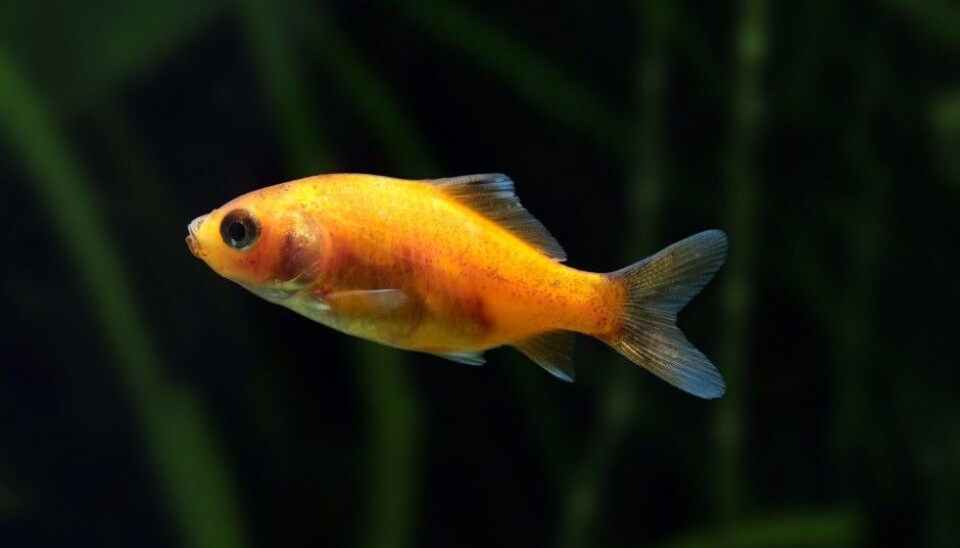An article from Inland Norway University of Applied Sciences

Goldfish produce alcohol to survive the winter
A new study of how goldfish survive frozen winters without oxygen by producing alcohol may shed light on alcohol resistance mechanisms.
Oxygen is key for the survival of most animals with vertebras, including fish – and humans. Key, in this respect, means that most would die within minutes of being deprived of oxygen.
Humans, for example, may survive a couple of weeks without food, a few days without water, but only approximately six minutes without oxygen. The reason prompt CPR is crucial in cases of cardiac arrest is that following a relatively short period of oxygen deprivation, the damage to the human brain is irreversible.
Complete oxygen deprivation
The condition of oxygen deprivation to living tissue is called anoxia.
It is unsurprising that studying anoxia – especially unique ways of dealing with anoxia in animals – has been a growing interest for researchers.
“We have a lot to learn from the animal kingdom,” says Stian Ellefsen from Inn University who co-supervised the study. “For every physiological challenge, there’s an ideal animal for studying it, with an evolved and unique way of dealing with it.”
Beyond the mere fascination evoked by this unusual phenomenon, important insight can be gained by such research. The Carassius genus – in which the most well-known species is the goldfish – is naturally exposed to high levels of alcohol concentrations for up to 4-5 months a year, which is produced in order to tolerate anoxia. The researchers hold that studying this phenomenon may shed light on molecular mechanisms providing resilience against prolonged alcohol exposure.
Only a few vertebrates possess mechanisms that allow them to handle anoxia and thus survive frozen winters in oxygen-deprived environments. This makes Carassius very interesting indeed.
Convert lactic acid to alcohol
Oxygen is necessary in order to facilitate the process of energy extraction in an aerobic organism. In a nutshell, without oxygen an organism cannot convert energy stored in food to available energy on a cellular level, halting its metabolism – the process that maintains life.
The crucial factor here is that anaerobic metabolism is possible, but the process results in the production of toxic lactic acid, which builds up to fatal levels.
Carassius have evolved a mechanism that allows them to rid themselves of the toxic lactic acid by converting it to alcohol, which diffuses through their gills into the surrounding water.
Unique characteristic – mysterious mechanism
The exact mechanism behind the extreme anoxia tolerance through the production of alcohol in the studied species – crucian carp and goldfish – had been previously unknown. The researchers set to discover the molecular basis of the alcohol production.
Earlier work revealed that Carassius’ ability to convert lactic acid to alcohol was the key to their ability to tolerate anoxia. However, what in particular allows this has only been revealed in this research.
The researchers discovered evidence suggesting an alternative enzyme activated during anoxia, with a function similar to an enzyme in brewer’s yeast.
"There's always some insight to be gained from studies like this one that is relevant from a human perspective," says Ellefsen.
"The Carassius genus can help us understand the process of surviving in an alcohol-enriched environment, which may provide us with new ways of treating alcoholism in humans. That's one very intriguing perspective of comparative physiology."
This article was updated 09/13/17.






























